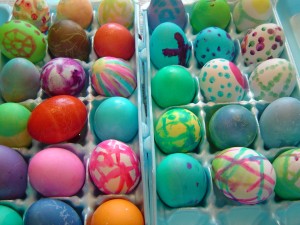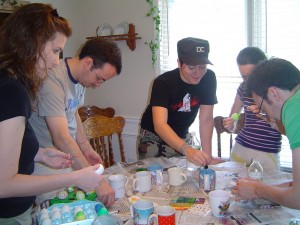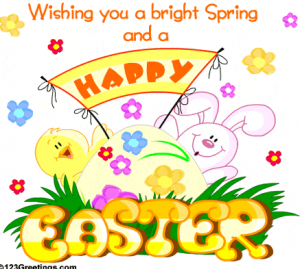. . . the gift of God is eternal life in Christ Jesus our Lord.
Romans 6:23
(History and Helps for Enjoying Easter Traditions While Teaching Eternal Truths)
Easter occurs on the Sunday after the first full moon following Spring Equinox. In ancient days, this first moon was a sign to farmers to make sure they planted the first seeds of the season as the cold winter was over and daylight was longer. Middle Eastern cultures, such as the Hebrews, Arabs, Assyrians and Babylonians, had spring traditions of celebrating the first seedlings of their new crops. They brought them in baskets to temples for a blessing that their gods would continue to bless the crops for the rest of the year.
To Christians, Easter represents the resurrection of Christ. Lent is the season that proceeds Easter and lasts for forty days. During the Lent season, it is expected to give up something such as meat, dairy, eggs, or whatever.. The custom of having a large Easter supper represents the end of the fast. The food was brought to the church in large baskets, thus the connection to treats in Easter baskets today.
The Easter grass comes from the tradition of Dutch children waiting for the delivery of eggs on Easter Sunday. They would keep these eggs in ‘bird nests’ of grass.
- Easter basket is woven together like the crown of thorns
- Easter grass is like hay in the manger for baby Jesus
- Bag of gold or silver covered chocolate coins represent the betrayal of Jesus by Judas
- Chocolate rooster is a reminder of Peter’s three denials of Jesus
- One hollow plastic eggs that is empty to represent the empty tomb
- Marshmallow chicks, bunnies remind us of new life and new birth
- And always put a cross in the basket. It can be a chocolate one or possibly one you have made together. Put the cross in the basket each year with the new gifts to be a reminder of the greatest Gift of all and the amazing Reason we celebrate!!
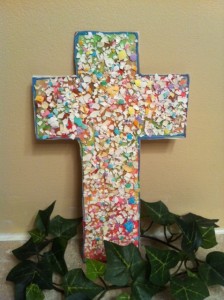
(colored egg shells glued on cardboard cross)
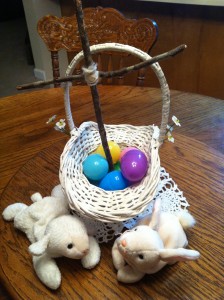
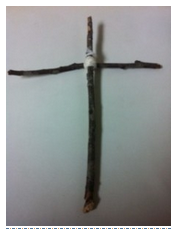
![easter_egg_hunt[1]](http://www.trainupthechild.org/wp-content/uploads/2014/04/easter_egg_hunt1-300x225.jpg)



